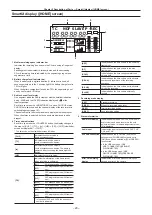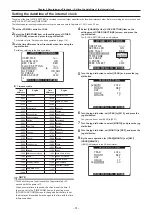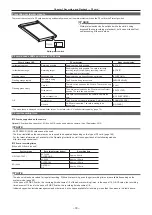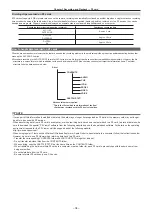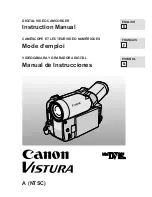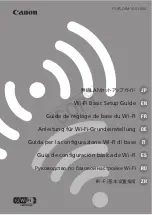
– 23 –
Chapter 2 Description of Parts — Shooting and recording/playback functions section
Shooting and recording/playback functions section
2
5 6 7 8
9
3 4
1
r
Shooting and recording (Camera unit)
1 <ND FILTER> (filter switching) dial (page 35)
Adjust the amount of light entering the MOS sensor. Used when there
is strong natural light.
Dial position
Setting
Description
<1>
<CLEAR>
The ND filter is not used.
<2>
<1/4ND>
The amount of light entering the MOS
sensor is reduced to 1/4.
<3>
<1/16ND>
The amount of light entering the MOS
sensor is reduced to 1/16.
<4>
<1/64ND>
The amount of light entering the MOS
sensor is reduced to 1/64.
2
Turn on/off the electronic shutter.
<OFF>
The electronic shutter is disabled.
<ON>
The electronic shutter is enabled.
<SEL>
The speed of the electronic shutter can be changed.
This is a spring switch. Each turn towards the <SEL> side alters the
shutter speed.
3 <AUTO W/B BAL> switch (page 53)
<AWB>
White balance is automatically adjusted. When this
switch is operated with the <WHITE BAL> switch on
the side set to the <A> or <B> position, adjustment is
performed in several seconds and adjustment values
are stored in memory.
When the <WHITE BAL> switch is at the <PRST>
position, the preset color temperature can be changed
by setting the <AUTO W/B BAL> switch towards the
<AWB> side, and setting it once again towards the
<AWB> side while the color temperature is displayed.
<ABB>
Black balance is automatically adjusted.
4
<USER> buttons (<USER MAIN>/<USER1>/<USER2>) (page 60)
Assign user-selected functions to each button. Pressing each button
performs the assigned function.
5 <DISP/MODE CHK> switch (page 78)
This is the spring switch to check the shooting status of the camera.
f
When it is pushed towards the <OFF> side, all displays other than
the operating mode display and frame display such as area, and the
counter, marker, and safety zone on the viewfinder screen turn off.
f
Push it towards the <CHK> side to display all information such as
the setting status of the shooting functions and functions assigned
to the <USER> buttons (<USER MAIN>/<USER1>/<USER2>) on
the viewfinder screen during camera standby or shooting. While the
information is displayed, push it towards the <CHK> side again to
display the proxy and network setting status (only when the option
is installed). The mode check information display disappears after
approximately three seconds.
f
Switch the video amplifier gain according to the lighting conditions
under which you are shooting.
f
The gain values for the <L>/<M>/<H> positions can be set by [LOW
GAIN], [MID GAIN] or [HIGH GAIN] items on the setting menu [SW
MODE] screen.
f
Factory settings are L=0 dB, M=6 dB and H=12 dB.
7 <OUTPUT>/<AUTO KNEE> selector switch
Select the video signals output to the memory, viewfinder and video
monitor from the camera unit.
CAM.AUTO
KNEE ON
Video captured on the camera is output and the auto
knee function is activated.
Instead of the auto knee function, the dynamic range
stretcher (DRS) function can be assigned.
CAM.AUTO
KNEE OFF
Video captured with the camera is output and the auto
knee function is not activated.
The knee point is fixed to the level set by menu
operations.
<BARS>
The color bar signal is output. The auto knee function is
disabled.
@
@
NOTE
t
Auto knee function
Usually, when you adjust levels to shoot people or scenery
against a strongly lit background, the background will be totally
white-out, with buildings and other objects blurred. In such a
case, the auto knee function reproduces the background clearly.
The auto knee function is effective when shooting the following
scenes:
- The subject is a person positioned in the shade under a clear
sky.
- The subject is a person inside a car or a building, and you
also want to capture the background visible through a window.
- The subject is a high-contrast scene.
8 <WHITE BAL> (white balance memory selector) switch
Select the white balance adjustment method.





















